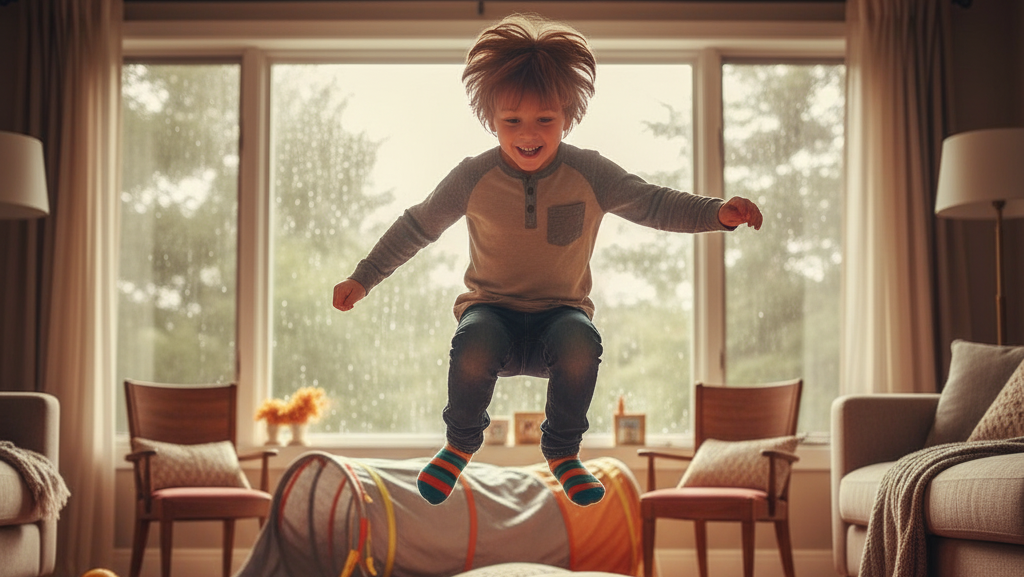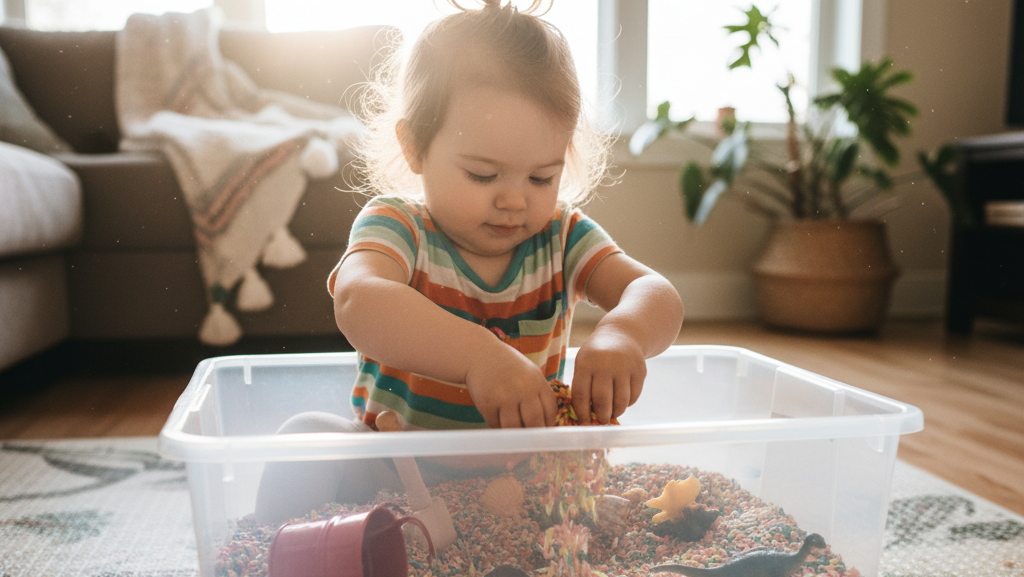
Building Blocks of Balance: 5 Indoor Games to Boost Gross Motor Skills
It’s a familiar scene: the weather outside is frightful, but the energy inside is anything but delightful. When kids are cooped up on a rainy or scorching hot day, that pent-up energy needs an outlet. While it’s tempting to turn to screens, these are the perfect moments to engage in simple, powerful games that build the foundation for all physical movement: gross motor skills.
Gross motor skills involve the large muscles of the body used for walking, running, jumping, and climbing. Developing these skills is essential for a child’s balance, coordination, and core strength. The best part? You don’t need a playground or expensive equipment. With a little creativity, your living room can become the ultimate developmental gym.
Here are five fun, easy indoor games that are secretly powerful workouts for your child’s growing body.
1. Pillow Obstacle Course
Transform your living room into an exciting adventure that challenges your child to think and move in new ways.
- What You Need: Pillows, sofa cushions, blankets, and small stools or sturdy boxes.
- What to Do: Create a path for your child to follow. Have them climb over a mountain of pillows, crawl through a tunnel made from a blanket draped over two chairs, balance-walk along a line of cushions, and jump from one “rock” (a small pillow) to another.
- Therapist’s Tip: Obstacle courses are fantastic for developing motor planning—the ability for the brain to conceive, plan, and carry out an unfamiliar action. Navigating the different surfaces and levels challenges their balance and strengthens their core and leg muscles with every climb and crawl.
2. Animal Walks
Unleash their imagination and get a full-body workout by pretending to be different animals.
- What You Need: An open space and a little imagination.
- What to Do: Call out different animals and have your child move across the room like them.
- Bear Crawl: Walk on hands and feet with hips high in the air.
- Frog Hop: Squat down low and leap forward.
- Crab Walk: Sit on the floor, plant hands and feet, and lift the hips to scuttle sideways or backward.
- Penguin Waddle: Stand with feet close together and waddle with arms straight at the sides.
- Therapist’s Tip: Animal walks are a playful way to build strength and coordination. The bear crawl strengthens the shoulders and core, the frog hop builds powerful leg muscles, and the crab walk improves arm strength and bilateral coordination (using both sides of the body together).
3. The Floor is Lava
This classic game is a thrilling test of balance, planning, and quick thinking.
- What You Need: Pillows, blankets, books, or anything that can serve as a safe “island” on the floor.
- What to Do: Scatter the items around the room, creating a path of safe spots. The goal is to move from one side of the room to the other without touching the floor—the “hot lava.”
- Therapist’s Tip: This game is a masterclass in balance and motor planning. Your child has to judge distances, plan their next move, and adjust their body to land safely on different surfaces. Each jump and careful step engages their core and leg muscles to maintain stability.
4. Balloon Volleyball
The slow, floating nature of a balloon makes it the perfect tool for practicing coordination without the pressure of a fast-moving ball.
- What You Need: One or two inflated balloons.
- What to Do: The rule is simple: don’t let the balloon touch the ground. Encourage your child to use their hands, head, feet, and knees to keep it airborne. You can play cooperatively together or see who can get the most hits in a row.
- Therapist’s Tip: Balloon volleyball is excellent for improving hand-eye coordination, visual tracking, and reaction time. Because balloons move slowly, it gives children more time to plan their movements. Encouraging them to use both hands promotes bilateral coordination.
5. Tightrope Walking
This simple activity requires focus and control, turning a line on the floor into a major balance challenge.
- What You Need: A roll of painter’s tape, a jump rope, or even a line of string laid out on the floor.
- What to Do: Create a “tightrope” on the floor. It can be straight, zig-zagged, or curved. Challenge your child to walk along the line without stepping off. To make it harder, have them walk heel-to-toe, walk backward, or carry a stuffed animal while they do it.
- Therapist’s Tip: Walking on a line is a direct and effective way to improve dynamic balance and engage core stability muscles. It helps children develop body awareness—the understanding of where their body is in space—which is crucial for coordinated movement.
These simple games prove that you can support your child’s physical development anytime, anywhere, with just a few household items and a spirit of play.
If you found these gross motor activities helpful and are looking for more personalized ways to support your child’s coordination and strength, our physical therapists are experts in creating fun and effective programs. Learn more about our developmental evaluations here.


